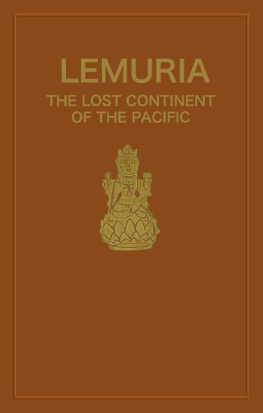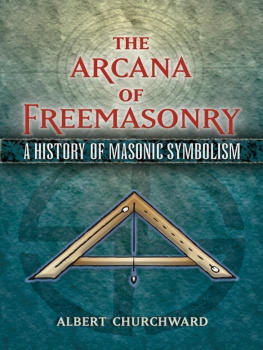CHAPTER X. THE TWIN SISTERS--RELIGION AND SCIENCE
IN the writings of the earth's First Great Civilization it is distinctly shown that the ancients considered religion and science as necessary one to the other. This is shown by their using the same symbols both for religion and science. These symbols, in the early days, were all geometrical figures.
Pythagoras, on his return to Athens from Egypt, taught his pupils: "To honor numbers and geometrical designs with the name of God."
Whence did these ancients get their geometrical designs of figures? And what induced them to use identically the same figures to teach both religion and science?
On close examination and comparison I find that most of the geometrical figures used may be found in the shape and details of flowers, leaves, et cetera, as the following examples show:
Fig. 1. The Daisy, a circle. Symbolizing the Sun and His Rays.
Fig. 2. The Syringa, a square. Symbolizing the Sacred Four.
Fig. 3. The Lily, a triangle and crossed triangles.

Fig. 1. The Daisy
The Circle-the Sun and her Rays
Fig. 4. The Moonflower, a triangle surmounting a square.
It appears to me irrefutable that the ancients borrowed their patterns of geometrical figures from flowers et cetera. These were nature's creations. Being nature's creations, the ancients did not theorize but followed along the lines laid down by the Creator. They accepted the Divine Examples and Laws to follow. In nature the ancient found the highest and finishing school for learning, which calls back a memory of the steps of an old Hindu temple at Lahar, where the, great Master said, referring to some wandering jungle minstrels who were playing at the foot of the steps, "Men call them prodigies. There are no prodigies. All things result from natural Laws."
The Egyptians in their early days excelled in Music. "They constructed their instruments to copy the voices of nature."
The old Rishi's parting words: "Go forth into the world, my son, and learn that which is written by nature."
Papyrus Ani. Dated 1320 B. C.: "Behold is it not written in this roll? Read ye, if ye come in the days unborn, if the gods have given you the skill."
The books from which the ancients learnt their lessons are with us today, and at our disposal. Will we learn to read them? Have the gods given us the skill? I shall answer. We have the power to attain the skill. It rests with ourselves to do so.

Fig. 2. The Syringa Bush
The Square--the Four Primary Forces
I think the foregoing is sufficient to show that the First Great Civilization obtained its knowledge of religion, arts, and sciences, not by fostering grotesque ideas, mythical theories, theological mirages and mysterious technology, but by studying, copying and applying nature's object lessons that lay before it, and lessons which lie before us today in nature's school of which the Infinite One is the Head Master.
Nature was created and built up on fundamental laws. These Divine Laws have been and are being fully expressed in created objects, all of which have been consistently followed throughout Time. They cannot be improved upon by man because they are divine. Being divine, they are perfect.
To represent religious and philosophic ideas and conceptions, even of the most abstract order, the ancients employed basic geometric forms as symbols. That they borrowed their knowledge of these geometric forms from natural objects--flowers, leaves and so forth--almost goes without saying. The four drawings of flowers by Viola de Gruchy which were shown at the beginning of this chapter, illustrate strikingly the manner in which the symbols of the ancients occur in nature.
During the past twenty to thirty years, numerous scholars and naturalists have delved deeply into the study of nature's geometry, and with the aid of the light cast by their researches we are beginning to obtain a more just appreciation of the knowledge of the ancients and of the extent to which they made practical application of that knowledge in their works of art and science.

Fig. 3. The Lily
The Triangle--the Symbol of Heaven
A. H. Church (on the relation, of Phyllotaxis to Mechanical Laws), T. A. Cook (The Curves of Life) and D'Arcy W. Thompson (On Growth and Form) are but three of the many who have in this century contributed to the rapid development of morphology into an advanced science. And one of the most amazing and valuable results of their researches has been the discovery that the natural laws they reveal were not only understood by the ancients, but applied to an extent unheard of in this civilization of ours, which we too readily accept as the most advanced that has ever graced this earth.
Floral symbols were frequently used by the ancients. Many of these floral symbolizations became myths simply because those of later date of the New Civilization did not comprehend the symbols of the ancients. Something had been forgotten or something was purposely changed for priestly purposes.
As an example and applicable to this work I will quote from: The Human Side of Plants by Royal Dixon: "From the earliest history down to the present day, there have been races and individuals who believed implicitly in the spirituality of plants."
"Spirituality is a condition of responsiveness to and membership in the universal spirit of the Creator. The Infinite Substance--God."

Fig. 4. The Moonflower
The Pentagon--the Full Godhead
"The old Greeks and the Romans gave to the trees and plants the spirits of gods and men: and many more in modern times have lavishly bestowed souls on plants as did Adamson, Bonnet, Hedwig, and Edward Smith--with Martins and Fechner in Germany defending these views and being very liberal in their supply of souls to plants."
"Surely there is a suggestion of some existent truth, which should cause this universal interest and investigation into the possibility of plant spirituality."
In commenting on the foregoing paragraph, I shall say that there is not only a "suggestion" but an "actual truth" which is shown in the ancient writings known and understood by the priesthoods 5,000 years ago and probably only half of that time.
Originally nearly all of the prominent attributes of the Deity had several symbols, or perhaps it would be better to say more than one symbol. A principal symbol for each was either a flower or a tree. Flowers were given the preference for symbolizing Divine Forces and trees for lands and countries. Flowers were very popular to symbolize each of the Four Great Primary Forces. They were also called "the gods," being the command, desire, or will of the Creator. On a few occasions I have found them called "His executive children." These Forces have also prominent geometrical symbols. Take the geometrical symbol and place it on the floral symbol of the gods and it will be seen that the geometrical symbol is on the lines of the sacred flower.
















